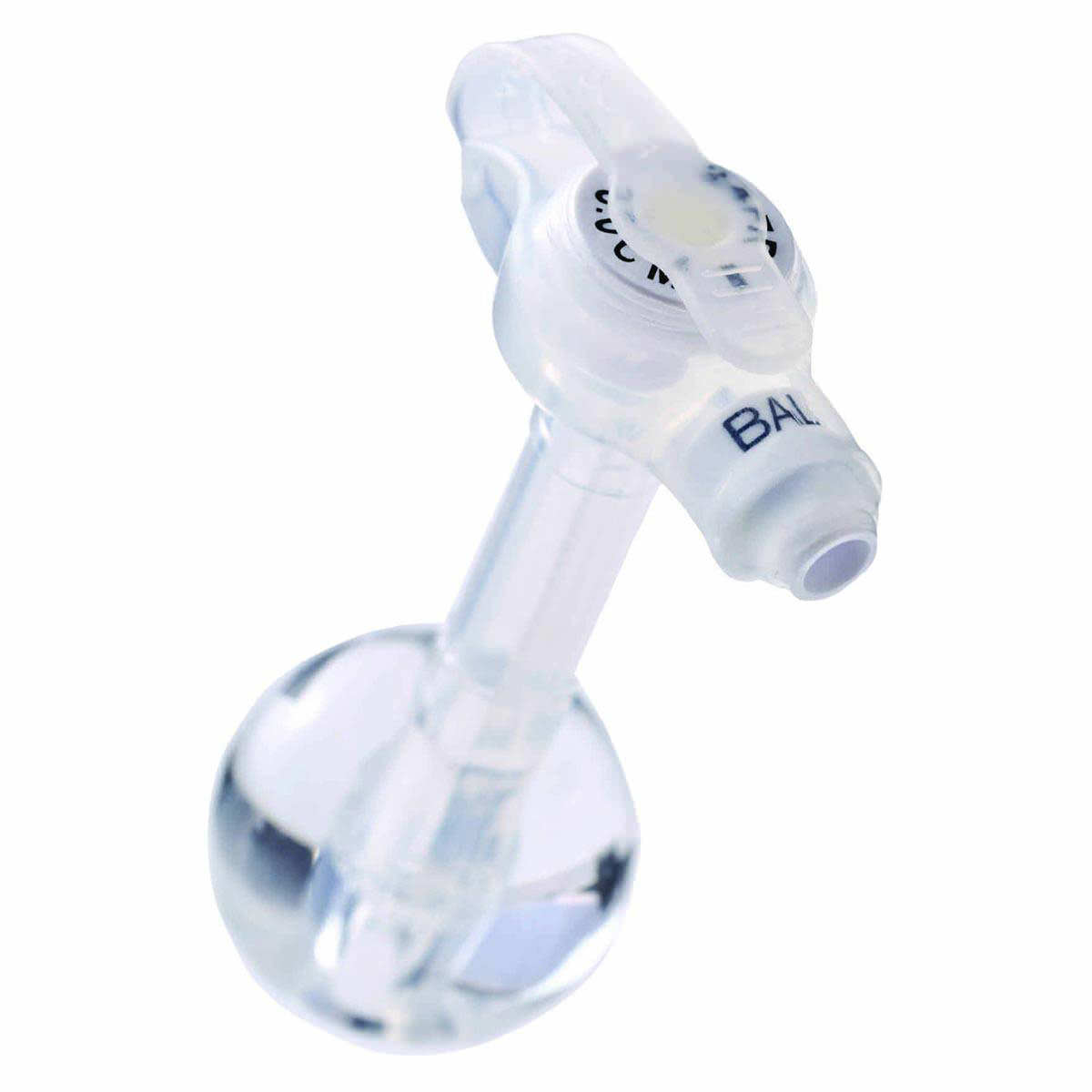MIC-KEY Low-Profile Gastrostomy Feeding Tube is an advanced alternative to traditional G-tubes, designed to support long-term enteral nutrition with improved comfort and convenience. Its discreet, low-profile design lies close to the skin, making it easy to conceal under clothing while providing greater mobility for everyday activities. The reduced external surface promotes airflow around the stoma, supporting skin integrity and helping minimize irritation. With simplified care and handling, this tube encourages greater patient independence and confidence, while the secure fit helps reduce the risk of gastric leakage.
Features
- Integrated proximal anti-reflux valve.
- Radiopaque stripe for X-ray visibility.
- Tapered distal tip recessed at proper fill volume.
- FDA-approved and CE-certified medical device.
- Low-profile design for discreet, comfortable wear.
- High-clarity medical-grade silicone for visibility and flexible draping.
- Inflatable internal silicone balloon enhances secure placement and comfort.
- Ideal for active users seeking an alternative to standard gastrostomy tubes.
- Patented universal connector helps minimize accidental disconnections and extends tube life.
- Ventilated Secur-Lok external ring supports airflow and reduces pressure around the stoma.
MIC-KEY Low-Profile Gastrostomy Feeding Tube Kit Contents:
- 1) MIC-KEY Gastrostomy Feeding Tube (Low-Profile G-Tube)
- Balloon Valve, Feeding Valve Cover, Balloon Cuff, Feeding/Medication Valve, Balloon, External Base, Balloon Tip, Shaft
- 1) 6 ml Luer Slip Syringe
- 1) 35 ml Catheter Tip Syringe
- 1) MIC-KEY Continuous Feed Extension Set with SECUR-LOK Right Angle Connector with 2 Port “Y” and Clamp 12 (i.e., Right Angle Extension Set)
- Feeding Port Plug, Medication Port Plug, Feeding Port, SECUR-LOK Connector, Medication Port
- 1) MIC-KEY Bolus Feed Extension Set with Cath Tip, SECUR-LOK Straight Connector and Clamp 12 (i.e., Bolus Extension Set)
- Bolus Feeding Port
- SECUR-LOK Connector
- 4) Gauze Pads
- 1) MIC-KEY Insertion Stylet
- 1) Water-Soluble Lubricant
Indications For Use
The AVANOS MIC-KEY Low-Profile Gastrostomy Feeding Tube is intended for patients who require long-term enteral feeding, cannot tolerate oral intake, need gastric decompression, or require direct medication administration into the stomach.
Contraindications
Contraindications include ascites, colonic interposition, portal hypertension, peritonitis, and morbid obesity.
Complications
Caution: Do not use if the sterile package is damaged.
Potential complications include:
- Skin Breakdown, Infection, Hypergranulation, Ulcers, Intraperitoneal Leakage, Pressure Necrosis
Placement
The MIC-KEY Feeding Tube may be placed percutaneously under fluoroscopic, laparoscopic, or endoscopic guidance, or as a replacement using an existing stoma tract.
Warning: Perform gastropexy to secure the stomach to the abdominal wall and measure the stoma tract before initial placement. Do not use the retention balloon as a gastropexy device.
An incorrect tube size may lead to necrosis, buried bumper syndrome, or hypergranulation.
Balloon Verification
- Inspect the tube before use and inflate the balloon only with sterile or distilled water using the provided syringe.
Balloon Maintenance
Check balloon volume weekly.
- Withdraw and measure water volume; refill as needed to the prescribed amount. If volume is reduced again after 10–20 minutes, replace the device.
- Caution: Do not use air or saline. Overinflation may shorten balloon life; underinflation may lead to tube displacement.
Balloon Longevity
Typical silicone balloon lifespan ranges from 1–8 months, depending on care, pH, water volume, and medications.
Warning
Do not reuse, reprocess, or resterilize this medical device. Reuse, reprocessing, or resterilization may
- Adversely affect the known biocompatibility characteristics of the device
- Compromising the structural integrity of the device
- Lead to the device not performing as intended, or
- Create a risk of contamination and cause the transmission of infectious diseases, resulting in patient injury, illness, or death
- For enteral nutrition and/or medication only.
- Please use caution: breathing systems and driving gases, urethral/urinary, limb cuff inflation, neuroaxial, and intravascular/hypodermic connectors may have the potential for misconnection.
